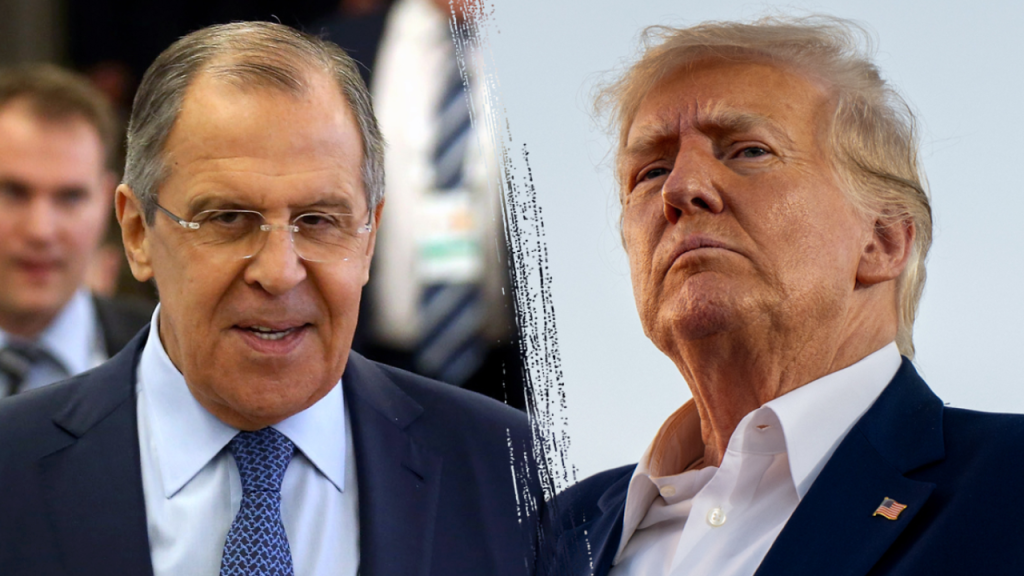Paragraph 1: Lavrov’s Rejection of Alleged Peace Proposal
Russian Foreign Minister Sergei Lavrov has vehemently denied the existence of a purported peace deal concerning Ukraine and NATO, allegedly proposed by advisors to former US President Donald Trump. In an interview with the Russian state-run news agency TASS, Lavrov dismissed the alleged proposal, which reportedly involved a 20-year postponement of Ukraine’s NATO membership and the deployment of British and European peacekeeping forces within Ukraine. Lavrov attributed the source of this information to "leaks" and a TIME Magazine interview with Trump, although the interview itself contained no mention of such a proposal.
Paragraph 2: Accusations and Counter-Accusations
Lavrov used the interview as a platform to criticize NATO’s expansionist policies, which he claims are a root cause of the Ukraine crisis. He also accused NATO of direct involvement in the conflict, alleging the participation of NATO military personnel and mercenaries in planning and executing combat operations alongside Ukrainian forces. Furthermore, he accused NATO of complicity in attacks within Russian territory, referencing President Putin’s earlier public statements. This rhetoric underscores the deep mistrust and opposing narratives that characterize the relationship between Russia and the West amidst the ongoing conflict.
Paragraph 3: Trump’s Stance on the Conflict
Former President Trump, in his TIME Person of the Year interview, advocated for a negotiated end to the Russo-Ukrainian war, emphasizing the mutual benefits of de-escalation. He expressed his disapproval of providing Ukraine with long-range missiles capable of striking targets deep within Russia, arguing that such actions only serve to escalate the conflict. While advocating for a peaceful resolution, Trump also maintained that reaching an agreement requires a firm stance and a commitment to negotiation rather than abandonment of involved parties.
Paragraph 4: Putin’s Position and Willingness to Negotiate
Shortly before Lavrov’s interview, Russian President Vladimir Putin also expressed a willingness to negotiate and compromise with Ukraine, while simultaneously asserting Russia’s strengthened position in the conflict. Putin predicted the imminent depletion of Ukrainian fighting forces, suggesting that this would create a more favorable environment for negotiations. He reiterated Russia’s long-standing readiness for dialogue and compromise, although he placed the onus on the "other side" to reciprocate this willingness to engage in constructive talks.
Paragraph 5: Disputed Narrative of the Conflict’s Origins and Trajectory
The exchange of accusations and pronouncements from both sides highlights the starkly different interpretations of the conflict’s origins and its potential resolution. Russia frames NATO expansion as a provocation that led to the current situation, while the West views Russia’s actions in Ukraine as an unprovoked act of aggression. This fundamental disagreement on the root causes of the conflict complicates efforts to find common ground and achieve a lasting peace. Furthermore, the conflicting narratives regarding the extent of external involvement in the fighting, with accusations of NATO personnel participating on the Ukrainian side and Russian claims of attacks within its own territory, further muddy the waters and contribute to the escalating tensions.
Paragraph 6: Uncertainty Surrounding the Alleged Peace Proposal and Future Prospects
The lack of corroboration from any US officials regarding the alleged peace proposal mentioned by Lavrov casts doubt on its validity. It also underscores the challenges in navigating the complex information landscape surrounding the conflict, where official pronouncements are often intertwined with speculation and unverified claims. Moving forward, the prospects for a negotiated settlement remain uncertain, hampered by deeply entrenched positions and conflicting interpretations of the conflict’s nature and potential resolution. While both Russia and figures like former President Trump have expressed a desire for negotiations, the substantial disagreements on the core issues and the lack of trust between the involved parties present significant obstacles to achieving a peaceful resolution. The conflicting narratives and ongoing hostilities create a volatile environment where finding common ground and establishing a framework for lasting peace remains a significant challenge.

